-
 Bitcoin
Bitcoin $106,437.2012
0.82% -
 Ethereum
Ethereum $2,442.5287
0.82% -
 Tether USDt
Tether USDt $1.0005
-0.02% -
 XRP
XRP $2.1812
-0.27% -
 BNB
BNB $645.1327
0.45% -
 Solana
Solana $146.2379
0.39% -
 USDC
USDC $0.9999
-0.01% -
 TRON
TRON $0.2751
0.92% -
 Dogecoin
Dogecoin $0.1662
-0.23% -
 Cardano
Cardano $0.5827
-1.22% -
 Hyperliquid
Hyperliquid $37.5225
0.04% -
 Bitcoin Cash
Bitcoin Cash $479.0877
4.02% -
 Sui
Sui $2.7846
-3.27% -
 Chainlink
Chainlink $13.3576
0.84% -
 UNUS SED LEO
UNUS SED LEO $9.0252
-1.20% -
 Stellar
Stellar $0.2455
-1.07% -
 Avalanche
Avalanche $18.0680
-1.81% -
 Toncoin
Toncoin $2.8948
-1.07% -
 Shiba Inu
Shiba Inu $0.0...01164
-1.65% -
 Litecoin
Litecoin $85.0637
-0.06% -
 Hedera
Hedera $0.1526
-0.89% -
 Monero
Monero $316.2941
0.78% -
 Ethena USDe
Ethena USDe $1.0003
-0.04% -
 Polkadot
Polkadot $3.4113
-1.87% -
 Dai
Dai $1.0000
-0.01% -
 Bitget Token
Bitget Token $4.4488
5.16% -
 Uniswap
Uniswap $7.1740
3.09% -
 Pi
Pi $0.5968
11.43% -
 Pepe
Pepe $0.0...01010
-0.65% -
 Aave
Aave $264.3189
0.40%
cheap way to transfer usdt
Transferring USDT cheaply involves using networks like TRON (TRC20) or Polygon (MATIC) instead of Ethereum (ERC20), comparing exchange fees, considering P2P exchanges (with inherent risks), and timing transfers to avoid network congestion.
Mar 25, 2025 at 07:35 am
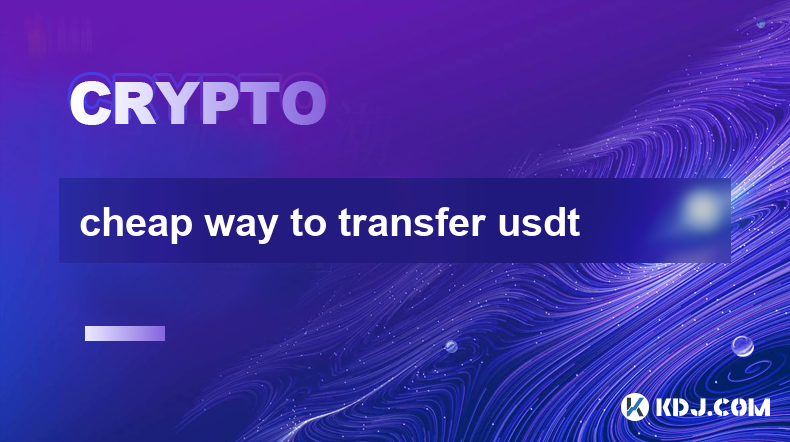
Key Points:
- Utilizing cheaper networks like TRON (TRC20) or Polygon (MATIC) for USDT transfers often results in lower fees compared to Ethereum (ERC20).
- Peer-to-peer (P2P) exchanges provide an alternative, potentially offering better rates but introducing risks.
- Choosing the right exchange significantly impacts transfer costs; some exchanges have lower fees than others.
- The amount of USDT transferred influences the final cost; larger transfers may see proportionally lower fees.
- Understanding network congestion impacts transaction fees; transferring during periods of low network activity is advisable.
Cheap Ways to Transfer USDT
USDT, a popular stablecoin pegged to the US dollar, is frequently traded across various cryptocurrency exchanges and platforms. Transferring USDT can incur fees, and minimizing these costs is a priority for many users. This article explores cost-effective methods for transferring USDT.
Leveraging Different Blockchains:
One of the most significant factors influencing USDT transfer costs is the underlying blockchain. Ethereum (ERC20) is a commonly used standard, but its transaction fees can be quite high, especially during periods of network congestion. Alternatively, transferring USDT on networks like TRON (TRC20) or Polygon (MATIC) often results in substantially lower fees. These networks are designed for faster and cheaper transactions. However, remember that each network has its own security considerations and level of decentralization.
Utilizing Peer-to-Peer (P2P) Exchanges:
Peer-to-peer (P2P) exchanges offer a decentralized approach to USDT transfers. Users can directly trade USDT with other individuals, potentially negotiating more favorable exchange rates and lower fees compared to centralized exchanges. However, P2P exchanges present inherent risks, including the possibility of scams or fraudulent transactions. Thorough due diligence and careful selection of trading partners are crucial when using P2P platforms.
Choosing the Right Cryptocurrency Exchange:
Different cryptocurrency exchanges have varying fee structures. Some exchanges prioritize low transaction fees, while others might offer more advanced features at a higher cost. Before initiating a USDT transfer, compare the fee schedules of multiple exchanges to identify the most cost-effective option. Factors such as withdrawal fees and deposit fees should be carefully considered.
Impact of Transfer Amount:
The quantity of USDT being transferred also plays a role in determining the overall cost. While per-transaction fees might remain relatively constant, the percentage of the total transaction value represented by these fees decreases as the transfer amount increases. This means larger transfers generally result in lower proportional fees.
Network Congestion and Transaction Fees:
Network congestion significantly impacts transaction fees on blockchains like Ethereum. When the network is busy, transaction fees surge due to increased demand for block space. Conversely, during periods of low network activity, fees are typically lower. Monitoring network conditions and timing transfers strategically can help minimize costs.
Understanding Withdrawal and Deposit Fees:
Many exchanges charge fees for both depositing and withdrawing USDT. These fees can vary depending on the payment method used and the specific exchange. It's crucial to factor these fees into your overall cost calculation when choosing a platform for your transfer. Some exchanges might offer free deposits or withdrawals under certain conditions.
Batching Transactions for Cost Savings:
For multiple USDT transfers to the same recipient, consider batching them into a single transaction whenever possible. Some platforms allow combining multiple transfers, potentially leading to lower overall fees compared to sending each transaction individually. This is especially beneficial when dealing with smaller amounts.
Using Layer-2 Solutions:
Layer-2 scaling solutions, like those offered by Polygon or Optimism, aim to reduce transaction costs and improve speed on base-layer blockchains like Ethereum. If your exchange supports Layer-2 transactions for USDT, utilizing them can significantly reduce fees compared to directly using the Ethereum mainnet. However, the availability of Layer-2 support depends on the exchange and the specific USDT implementation.
Exploring Other Stablecoins:
If flexibility is available, consider exploring other stablecoins with lower transfer fees. While USDT is widely used, other stablecoins might offer cheaper transaction costs on certain networks. Remember to carefully research the stability and reputation of alternative stablecoins before using them.
Security Considerations:
While pursuing cheaper transfer methods, prioritize security. Avoid using untrusted exchanges or P2P platforms. Always verify the legitimacy of the platform and ensure your chosen method employs strong security measures to protect your funds. Neglecting security for cost savings can lead to far greater losses.
Frequently Asked Questions:
Q: What is the cheapest way to transfer USDT?
A: There's no single "cheapest" method. The optimal approach depends on factors like the amount of USDT, your risk tolerance (P2P vs. centralized exchange), and the urgency of the transfer. Using TRC20 or MATIC networks generally offers lower fees than ERC20.
Q: Are P2P exchanges safe for transferring USDT?
A: P2P exchanges carry inherent risks. Scams and fraudulent activities are possibilities. Thorough due diligence, choosing reputable platforms, and carefully verifying the identity of your trading partner are crucial for mitigating these risks.
Q: How can I avoid high transaction fees when transferring USDT?
A: Choose less congested blockchains (like TRON or Polygon), compare exchange fees, transfer larger amounts (to reduce the percentage cost of fees), and time your transfers to avoid peak network activity.
Q: What are the risks associated with using cheaper USDT transfer methods?
A: Risks include potential scams on P2P platforms, slower transaction speeds on some networks, and potential security vulnerabilities on less established blockchains. Always prioritize security and reputation when selecting a transfer method.
Disclaimer:info@kdj.com
The information provided is not trading advice. kdj.com does not assume any responsibility for any investments made based on the information provided in this article. Cryptocurrencies are highly volatile and it is highly recommended that you invest with caution after thorough research!
If you believe that the content used on this website infringes your copyright, please contact us immediately (info@kdj.com) and we will delete it promptly.
- Bitcoin Price Soars to $106,596: Is This the Recovery We've Been Waiting For?
- 2025-06-25 12:25:14
- XRP Ledger's New Era: Batch Transactions and Token Escrow Take Center Stage
- 2025-06-25 12:45:12
- JasmyCoin: Price Prediction & the Quest for New Highs
- 2025-06-25 12:25:14
- Arctic Pablo Coin: The Meme Coin Primed for Lift-Off? Plus, Bonk & SHIB Updates!
- 2025-06-25 12:45:12
- BigBear.ai, AMD, QuantumScape: Stocks Soar and Solid-State Batteries Get Real!
- 2025-06-25 12:50:13
- Bitcoin, Ethereum, and the Iran-Israel Ceasefire: A Crypto Market Update
- 2025-06-25 13:05:13
Related knowledge
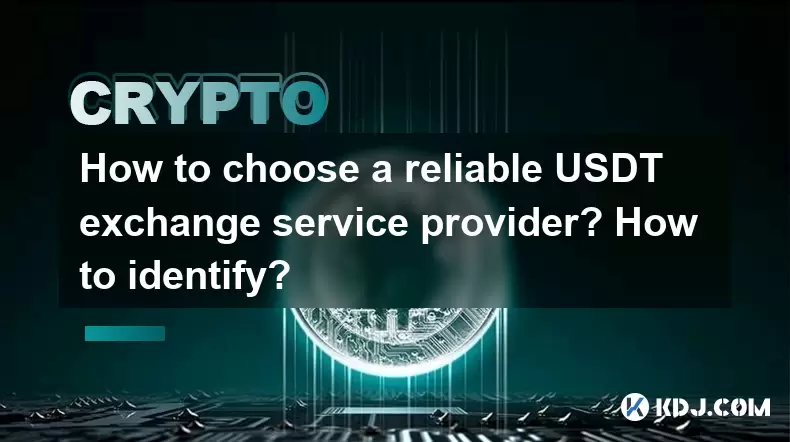
How to choose a reliable USDT exchange service provider? How to identify?
Jun 12,2025 at 03:15pm
Understanding the Role of USDT in Cryptocurrency TradingUSDT (Tether) is one of the most widely used stablecoins in the cryptocurrency market. It is designed to maintain a 1:1 peg with the U.S. dollar, offering traders and investors a way to hedge against volatility while remaining within the crypto ecosystem. Choosing a reliable USDT exchange service p...
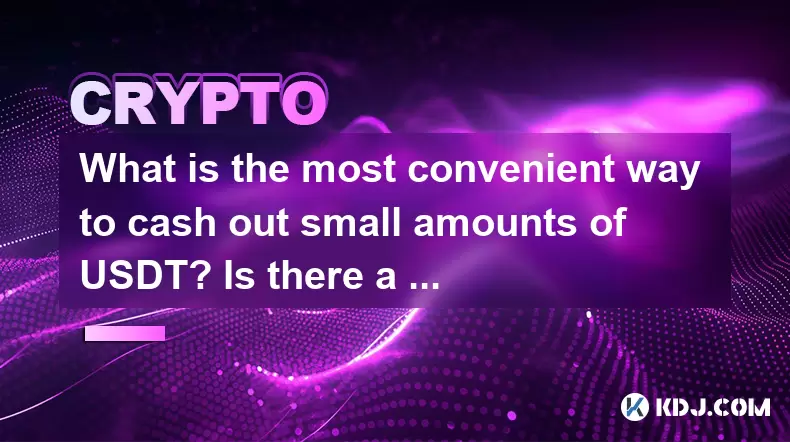
What is the most convenient way to cash out small amounts of USDT? Is there a shortcut?
Jun 11,2025 at 11:00pm
Understanding the Need to Cash Out Small USDT AmountsCashing out small amounts of USDT can be a challenge for many crypto users. Traditional methods often involve high fees, minimum withdrawal limits, or cumbersome verification processes that make it inefficient for small transactions. The key is to find a method that balances speed, cost, and convenien...
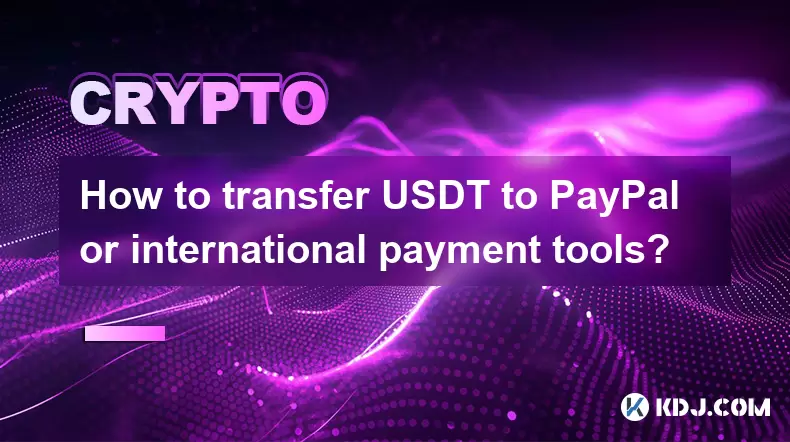
How to transfer USDT to PayPal or international payment tools?
Jun 15,2025 at 05:28am
Understanding the Basics of USDT and PayPal IntegrationUSDT (Tether) is a stablecoin pegged to the US dollar, offering blockchain-based value transfer with minimal volatility. PayPal, on the other hand, is a centralized digital wallet that facilitates fiat currency transactions globally. Direct integration between USDT and PayPal does not exist due to t...
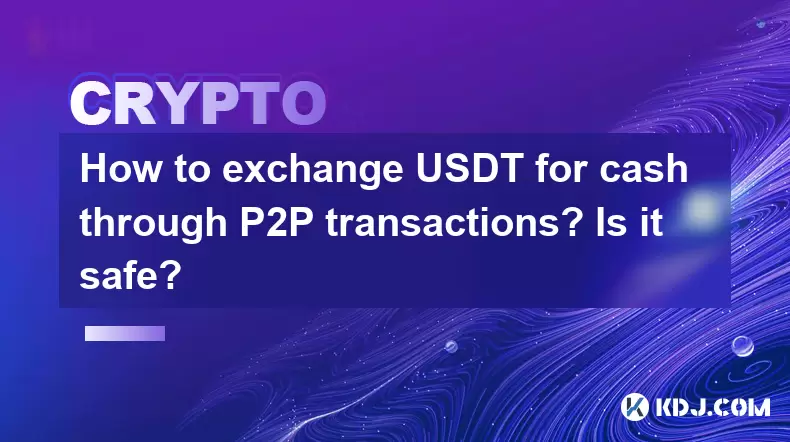
How to exchange USDT for cash through P2P transactions? Is it safe?
Jun 18,2025 at 07:56am
Understanding USDT and P2P TransactionsTether (USDT) is a stablecoin pegged to the value of the US dollar, making it a popular choice for users who want to avoid the volatility of other cryptocurrencies while still participating in the crypto ecosystem. Peer-to-peer (P2P) transactions allow individuals to trade directly with each other without going thr...
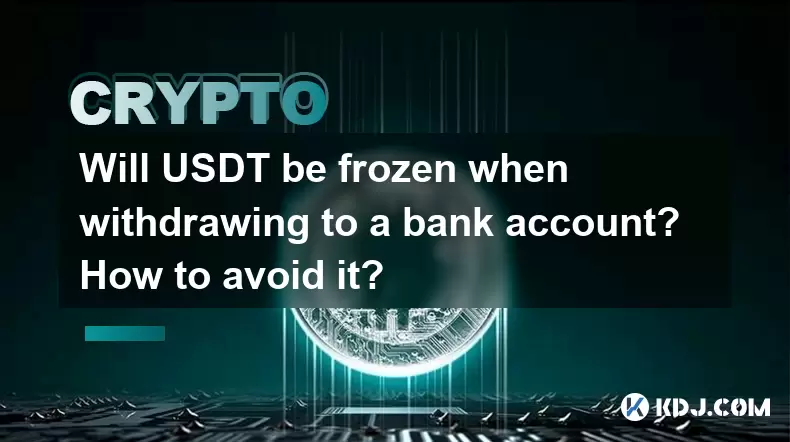
Will USDT be frozen when withdrawing to a bank account? How to avoid it?
Jun 15,2025 at 10:03am
Understanding USDT Withdrawals and Bank Account Freezing RisksWhen users decide to withdraw USDT (Tether) to a bank account, one of the most common concerns is whether their funds will be frozen during the process. This concern stems from real-life cases where individuals have encountered delays or restrictions when converting digital assets into fiat c...

How to avoid risks when exchanging USDT for cash? What are the pitfalls?
Jun 11,2025 at 08:14pm
Understanding the Risks of Exchanging USDT for CashWhen exchanging USDT (Tether) for cash, users must be aware of the potential risks involved. As a stablecoin pegged to the US dollar, USDT is widely used in crypto transactions due to its price stability. However, converting it into fiat currency like USD or CNY can expose users to several pitfalls, inc...

How to choose a reliable USDT exchange service provider? How to identify?
Jun 12,2025 at 03:15pm
Understanding the Role of USDT in Cryptocurrency TradingUSDT (Tether) is one of the most widely used stablecoins in the cryptocurrency market. It is designed to maintain a 1:1 peg with the U.S. dollar, offering traders and investors a way to hedge against volatility while remaining within the crypto ecosystem. Choosing a reliable USDT exchange service p...

What is the most convenient way to cash out small amounts of USDT? Is there a shortcut?
Jun 11,2025 at 11:00pm
Understanding the Need to Cash Out Small USDT AmountsCashing out small amounts of USDT can be a challenge for many crypto users. Traditional methods often involve high fees, minimum withdrawal limits, or cumbersome verification processes that make it inefficient for small transactions. The key is to find a method that balances speed, cost, and convenien...

How to transfer USDT to PayPal or international payment tools?
Jun 15,2025 at 05:28am
Understanding the Basics of USDT and PayPal IntegrationUSDT (Tether) is a stablecoin pegged to the US dollar, offering blockchain-based value transfer with minimal volatility. PayPal, on the other hand, is a centralized digital wallet that facilitates fiat currency transactions globally. Direct integration between USDT and PayPal does not exist due to t...

How to exchange USDT for cash through P2P transactions? Is it safe?
Jun 18,2025 at 07:56am
Understanding USDT and P2P TransactionsTether (USDT) is a stablecoin pegged to the value of the US dollar, making it a popular choice for users who want to avoid the volatility of other cryptocurrencies while still participating in the crypto ecosystem. Peer-to-peer (P2P) transactions allow individuals to trade directly with each other without going thr...

Will USDT be frozen when withdrawing to a bank account? How to avoid it?
Jun 15,2025 at 10:03am
Understanding USDT Withdrawals and Bank Account Freezing RisksWhen users decide to withdraw USDT (Tether) to a bank account, one of the most common concerns is whether their funds will be frozen during the process. This concern stems from real-life cases where individuals have encountered delays or restrictions when converting digital assets into fiat c...

How to avoid risks when exchanging USDT for cash? What are the pitfalls?
Jun 11,2025 at 08:14pm
Understanding the Risks of Exchanging USDT for CashWhen exchanging USDT (Tether) for cash, users must be aware of the potential risks involved. As a stablecoin pegged to the US dollar, USDT is widely used in crypto transactions due to its price stability. However, converting it into fiat currency like USD or CNY can expose users to several pitfalls, inc...
See all articles
























































































